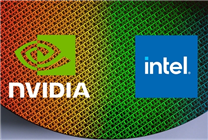NVIDIA’s Game-Changing $5 Billion Investment in Intel: What It Means for the Future of PCs
- Intel and NVIDIA collaborate, with NVIDIA investing $5 billion in Intel to enhance CPU and GPU integration.
- The partnership aims to revolutionize PC and data center markets with specialized AI solutions.
- Potential future impacts include heightened competition for AMD and shifts in the semiconductor landscape.
In a surprising move, NVIDIA has announced a landmark $5 billion investment in Intel, marking a significant shift in the computing landscape. This partnership aims to merge NVIDIA’s cutting-edge GPU architecture with Intel’s robust CPU capabilities, paving the way for unprecedented innovations in the PC and data center sectors.
NVIDIA’s investment will see them acquiring Intel common stock at a rate of $23.28 per share, positioning them as a formidable stakeholder. The two companies plan to leverage NVIDIA’s advanced NVLink bus technology, which offers a remarkable 14 times bandwidth and ultra-low latency, to foster smoother interconnectivity between their respective CPU and GPU architectures.
In the realm of data centers, Intel will craft specialized x86 processors tailored to support NVIDIA’s AI infrastructure platform. This collaboration is set to enhance the competitive edge of both companies, particularly through the integration of NVIDIA’s powerful AI GPUs alongside Intel’s processors.
The PC market is particularly poised for transformation. Intel is set to integrate NVIDIA’s RTX GPUs into a new series of chiplet x86 processors known as “Intel x86 RTX SOC.” This innovative approach will be utilized across various PC products—including desktops and laptops—spanning consumer, educational, and gaming markets. The implications are significant; the once distinct separation between CPUs and GPUs is blurring, propelling forward a new era for personal computing.
For laptops, this integration promises to simplify design and enhance performance, allowing manufacturers to bypass traditional discrete graphics cards. The Intel x86 RTX SOC chip will deliver potent performance combined with energy efficiency, much like AMD’s APU solutions. This development opens the door to a myriad of applications, ensuring a compact and powerful user experience.
During a joint press conference, NVIDIA emphasized that this partnership is not merely an investment but a stepping stone to a shared vision for the future, projecting nearly $50 billion in annual revenues combined through new product lines. This ambitious estimate hinges on their concerted efforts to penetrate the data center CPU market and boost sales of AI-enhanced laptops.
The anticipated collaboration is expected to yield business opportunities between $25 billion and $50 billion each year, broadening the reach of AI laptops and ultra-lightweight notebooks. NVIDIA is committed to a collaborative research and development roadmap that will reinforce its long-term investment in the x86 ecosystem while exploring additional architectural advancements.
Despite this monumental cooperation, NVIDIA’s CEO has assured stakeholders that the company will persist in its commitment to independent graphics solutions. This significant investment does not spell the end for NVIDIA’s core graphics products; instead, it represents an opportunity for both companies to complement each other’s strengths.
Both NVIDIA and Intel leadership recently indicated that the technical discussions regarding their collaboration began over a year ago. They have been working to harmonize their technologies and develop products leveraging NVLink interconnection technology across both PC and data center chips.
However, given the extensive development cycle for chip technology, the integration of their distinct technologies will require time. The first products are not expected until late 2027 or early 2028, with the transformative effects of this partnership likely to be felt across the industry.
While NVIDIA expressed its excitement about the collaboration, potential competitors in the semiconductor field, such as AMD and TSMC, may face increased challenges. AMD will now contend with a unified front from two semiconductor giants, intensifying competitive pressures across the computing spectrum.
TSMC might see a decline in orders for NVIDIA products, particularly in the gaming and AI segments, as Intel’s technological advancements come to fruition. Meanwhile, ARM’s aspirations to secure a foothold in the PC and data center markets may become more challenging, particularly with Intel’s backing for NVIDIA.
In conclusion, NVIDIA’s $5 billion investment in Intel is set to reshape the landscape of personal computing and data centers. As the collaboration deepens, it will be fascinating to witness how this partnership unfolds and what new innovations emerge from one of the most ambitious joint ventures in recent memory.





